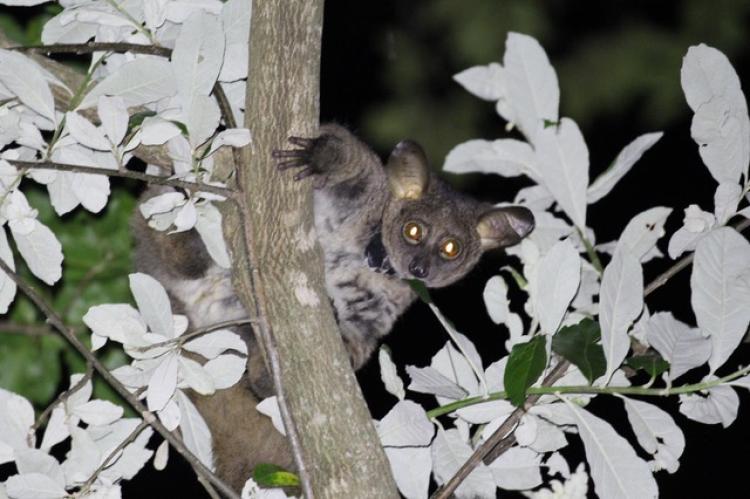
Professor Michelle Sauther's co-authored article, "Environmental Effects on Nocturnal Encounters of Two Sympatric Bushbabies, Galago moholi and Otolemur crassicaudatus, in a High-Altitude South African Northern Mistbelt Montane Habitat by Michelle L Sauther et al. has just been published in the International Journal of Primatology. This article is part of a special issue 'What They Do in the Shadows; New Perspectives on Africa’s Nocturnal Bushbabies'.
Abstract
Temperate living primates cope with a variety of environmental stressors, which may vary by body mass. We studied two sympatric galagos, the thick-tailed greater galago, Otolemur crassicaudatus (1.5 kg) and the southern lesser galago, Galago moholi (146 g), living in a South African northern mistbelt forest. We used 75 nightly encounter walks using thermal imaging from July 2017 to June 2018 to locate gala-gos (245 thick-tailed greater galago encounters, 207 southern lesser galago encoun-ters). For each species’ encounters we documented survey location, growing sea-son, insect and gum availability, ambient temperature, temperature season, rainfall, humidity, night length, hour, moon phase and fraction of moon illumination. We encountered the southern lesser galago at both cooler and warmer temperatures, later in the night, and more often during greater lunar illumination, e.g., they were lunar-philic. We had few encounters of the thick-tailed greater galago during very cold and very warm temperatures, more encounters earlier in the night, and more encounters during periods of low lunar illumination, e.g., they were lunarphobic. Our results can be understood in terms of body mass differences. A smaller body mass requires greater and more consistent energy, meaning the southern lesser galago needs to both maintain energy needs across different temperature regimes and to forage more exten-sively later in the night to attain enough food to support them throughout the follow-ing day. The thick-tailed greater galago’s larger body mass may buffer them during colder periods and allow them to forage earlier in the night. Being either lunarphobic or lunarphilic may relate to activity patterns of their predators. The southern lesser galago are visually oriented insect predators and being lunarphilic may facilitate both predator detection and enhance successful insect predation. Understanding how body mass may facilitate or hinder physiological and behavioral responses to environmen-tal stressors is thus relevant to understanding species’ resilience to climate change.
Read the article in International Journal of Primatology
